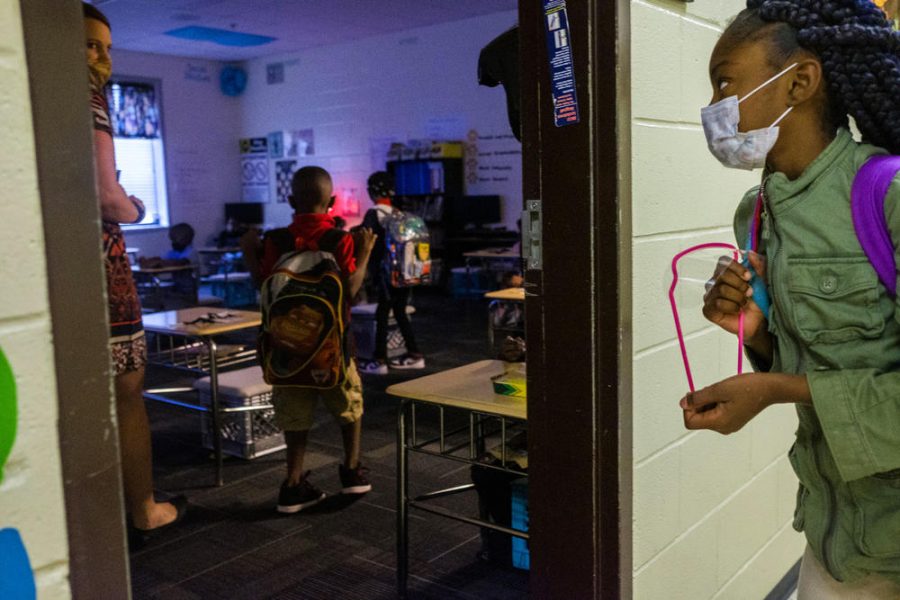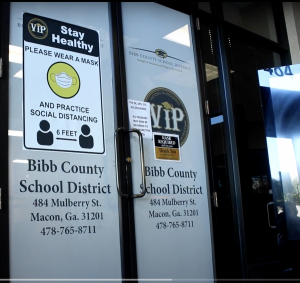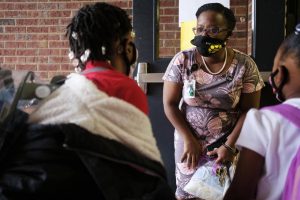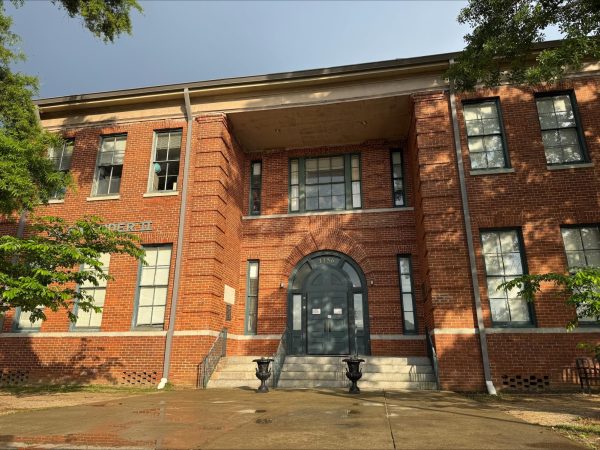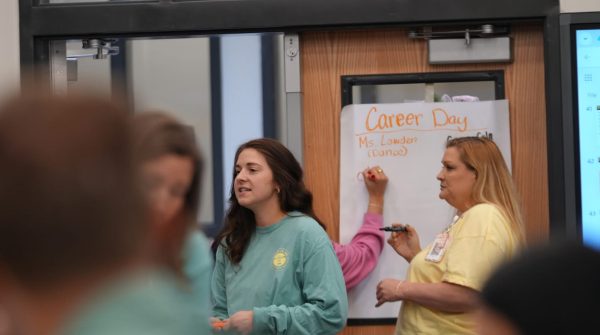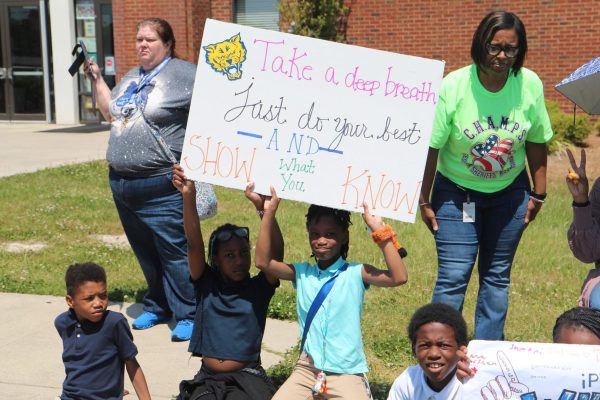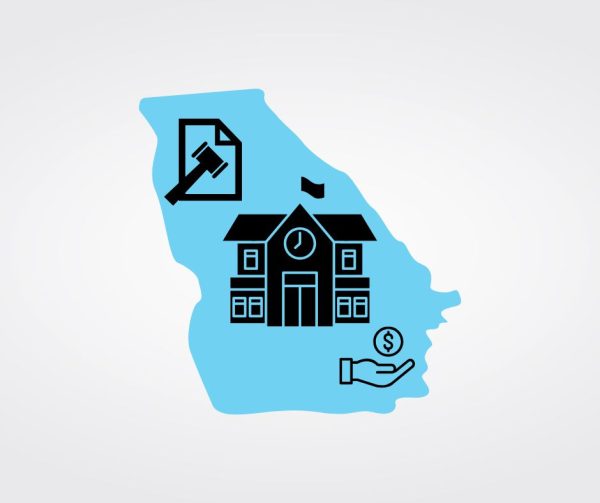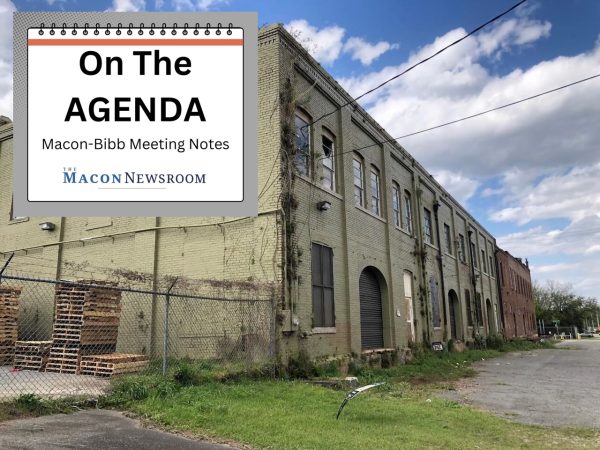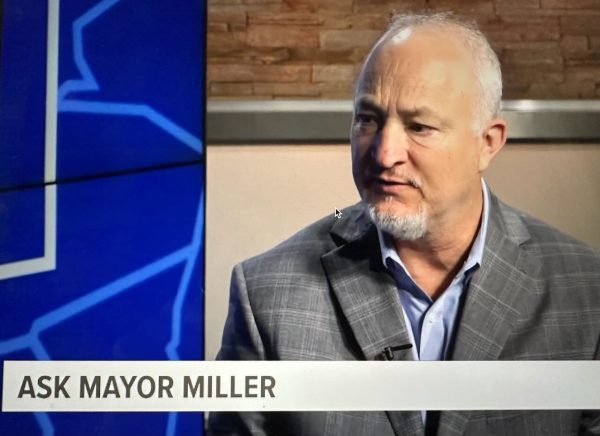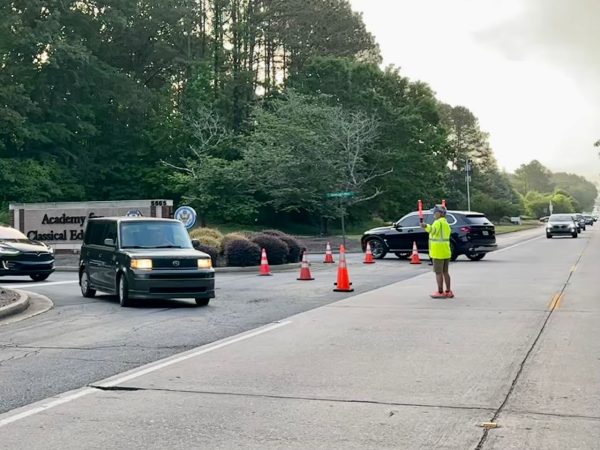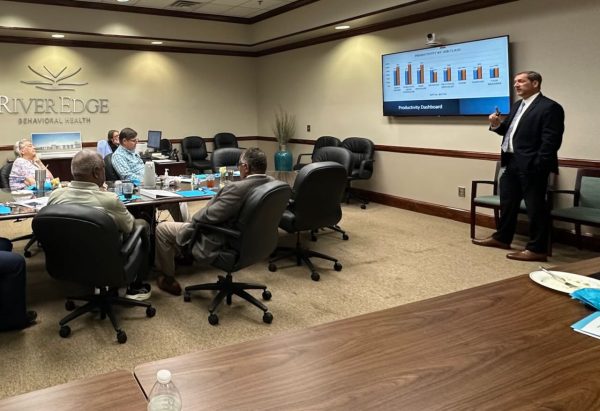Fewer students attend Bibb County schools. What will it mean for the future?
Students return for in-person classes on Nov. 9, 2020 at Ingram Pye Elementary in Macon, Ga. They went virtual again a few weeks later.
The Bibb County School District declined in enrollment by more than 15% over the past decade which could mean fewer dollars for schools here in the future.
For now, federal and state dollars it received during the pandemic have helped delay tough financial decisions it could face in coming years.
There are currently 21,159 students attending Bibb County public schools, about 3,800 fewer than 2010, according to the Georgia Department of Education. Enrollment numbers are submitted to the state twice every year in March and October.
“We believe in some ways it has to do with lower birth rates and with the migration patterns of when people move to Georgia from other states they went to the metro (Atlanta) area,” Bibb County School Superintendent Curtis Jones said.
The 2020 Census indicates Bibb County’s population declined slightly but the number of school-aged children here remained about 26,000, roughly 400 fewer than 2010. Birth rates nationwide started declining in 2008 during the recession, according to a Pew Research study.
Bibb schools projects enrollment will continue to decline in coming years. The 2022 budget estimates a total of 19,904 students by 2024-2025.
Charter schools have played a role in a changing student population. The district saw the sharpest decline in enrollment in 2019, when Academy for Classical Education, then a local charter school, became a state charter school. The change meant the school’s enrollment, which totalled 1,699 in March 2019, no longer counted toward Bibb County’s student population. It also meant students from outside Bibb County were eligible to attend.
ACE opened in 2014 and was the school district’s top performing school before its state charter was approved. About 69% of students enrolled at ACE are white, the inverse demographics of Bibb County schools, which are 77% Black.
Another state charter school, Cirrus Academy, has 541 students enrolled, an increase of about 16% since it opened in 2016. The student population at Cirrus is 92% Black.
Jones said the state legislature has made it advantageous for charter schools to come under state control instead of local control by increasing state funding per student and requiring fewer accountability measures.
THE UPSIDE TO DECLINE
One positive byproduct of declining enrollment is smaller class sizes.
“Small schools create that easy feel that people like, and so people know each other. I think that has helped with our students being able to learn more to create better relationships,” Jones said.
On the other hand, students leaving each of the 12 grades across 35 schools makes it a challenge for the district to appropriately reduce teaching positions.
Jones said the district is not looking to consolidate more schools as it has done over the last decade, but other changes are not out of the question.
“I would anticipate that you will see over the next five years or so a rezoning of schools to try to get them more in balance and to get them back to where we think we can better control where people are teaching kids,” he said.
The district is also exploring the possibility of building a new elementary school to accommodate growth on the south and north sides of the county.
DOLLARS PER STUDENT
When student enrollment declines, school districts receive fewer federal and state dollars. Fewer dollars mean school finance departments are tasked with figuring out other means of increasing revenue or decreasing expenses.
Oftentimes, that results in a choice of reducing staff, consolidating schools or raising the millage rate, something Bibb County Schools’ Chief Financial Officer Sharon Roberts said is “a last resort.”
“I don't see that happening in the next few years with our fund balance where it is now and with the additional federal funding that we've had,” Roberts said. “I still believe it’s going to be 2024 or 2025 before we have to make any major changes.”
In August, the district reduced the millage rate by a half mill.
Unexpected federal and state money have been a life raft of sorts for Bibb schools during the COVID-19 pandemic.
“The impact has not been as bad as it would have been,” Roberts said. “It'll catch up once the federal funding goes away and if we continue to decline.”
The district received federal CARES Act money to pay for unexpected costs such as hand sanitizer, masks and a new technology that filters airflow in buildings through ionization. It also saw some unexpected savings from fewer substitute teachers and lower transportation costs.
Other pots of federal money including Elementary and Secondary School Emergency Relief Fund and $106 million the district received in April from the American Rescue Fund, have helped address learning loss students experienced while schools were closed for in-person classes. It also helped pay for new tutoring programs and services centered on student’s social and emotional well being, Roberts said.
Last year, the district eliminated 62 positions, mostly central office staff, before the Georgia Department of Education announced in April that it would reinstate millions of dollars in austerity cuts. For Bibb Schools, the restoration of prior austerity cuts totalled about $11 million and Roberts said it was able to hire back some of the positions eliminated last year.
Bibb County voters overwhelmingly approved the Education Special Purpose Local Option Sales Tax, ESPLOST, for the fifth time in 2019. The school board plans to use the money to upgrade technology, security, buy new buses, revamp the central kitchen and renovate Thompson Stadium on Shurling Drive. Money collected from the ESPLOST makes up 14% of the district’s revenue.

EFFORTS TO INCREASE ENROLLMENT & FUNDS
The school board has implemented new means to retain students and draw resources to the district.
Earlier this year, the district created a Virtual Academy, a remote learning option for students that also has a brick-and-mortar classroom where students can come for extra help. There are about 450 students enrolled now. The goal for next semester is 600 students and then 1,000 next school year. Students do not have to live in Bibb County to enroll.
In June, the Bibb County School District created a nonprofit incorporation called The Bibb County Education Foundation Inc.
Board of Education Chairman Daryl Morton said the nonprofit is an avenue for charitable giving to the school district.
“If you had somebody who wanted to give something to the school system, there's really not a legal mechanism for us to be able to do it as we are constituted,” Morton said.
The new nonprofit is “a reflection of our increased partnerships with the business and nonprofit sector,” he said.
Before the school board meeting began in November, it was announced that Forrest B. Johnson & Associates donated $5,000 to Elam Alexander and $5,000 to Union Elementary schools.
It is unclear if donations to the district’s nonprofit will be made public as Georgia law does not compel nonprofits to disclose such information.
WHO ARE BIBB SCHOOLS FOR IN THE FUTURE?
A Macon Newsroom analysis of enrollment demographics for Bibb schools over the past decade shows this: The number of Hispanic and biracial students has nearly doubled from 2010 while Black, Asian and white students have declined in raw numbers of total enrollment by demographic.
Even so, Black students now make up 77% of the district’s enrollment compared to 73% in 2010 even though there are 2,000 fewer Black students.
White students have declined by roughly half since 2010 when that demographic made up 21% of the district.
The number of Asian students in the district has declined slightly from 379 to 243, a decrease of 36% over a decade.
Enrollment in most of Georgia’s public schools, except for metro Atlanta, has declined in recent years.
Stephen Owens, senior policy analyst for Georgia Budget & Policy Institute, said it is important to pay attention to who is leaving a district and, “is the end result just concentrated poverty inside existing schools?”
Bibb County students’ poverty rate for the 2019-2020 school year was 96%, according to the Governor's Office of Student Achievement.
The district has been serving free breakfast and lunch to students since 2014 through the Community Eligibility Provision, a federal program that reimburses the full value of meals to school systems with at least 40% of students in poverty.
“The data is pretty clear that just once you pass this threshold of about 40% of your students living in poverty, it can have a real damaging effect on student outcomes if there’s not significant funds to invest in that school,” Owens said.
Georgia is one of eight states that does not provide money specifically to educate students living in poverty, Owens said, and “it can leave districts in this really dangerous, this really difficult position on how to serve those students.”
Bibb County schools were forcibly desegregated in February 1970. That fall, five new private schools opened here.
PRIVATE SCHOOLS
Enrollment data obtained from the Georgia Department of Education through the Open Records Act shows student enrollment in private schools in Bibb County is declining, too.
In the early 1990s, there were 4,880 private school students in Bibb County. In 2015, there were 3,576 students enrolled in 31 private schools here. In 2020, there were a little more than 3,000 students enrolled in 22 private schools.
The Macon-Newsroom reached out to some of the largest private schools here including Stratford Academy, Mount de Sales, Tattnall Square Academy and First Presbyterian Day School. All schools declined to disclose enrollment numbers with the exception of FPD, which reported it had 809 students, an increase from 770 last school year.
Asked to what the school attributes the increase, Beth Burnsed, director of marketing for the school, said it is multifaceted.
“Parents appreciate the product we offer and the energy and enthusiasm for what FPD provides is spreading,” she said.
First Presbyterian Day School had an enrollment of 820 in grades 1 through 12 during the 2017-2018 school year, according two a survey conducted every two years by the U.S. Department of Education’s National Center for Education Statistics. About 87% of its students were white, 7% Black, 4% Asian and fewer than 1% multiracial.
Mount de Sales Academy reported an enrollment of 586 for the 2017-2018 school year for grades 6-12. About 62% of students there are white, 23% Black, 6% Hispanic and 7% Asian and 2% multiracial.
Stratford Academy reported 788 students enrolled for the 2017-2018 school year for grades 1 through 12. About 79% of students there are white, 12% Asian, 6% Black, 2% multiracial and fewer than 1% Hispanic.
Tattnall Square Academy reported 448 students enrolled for the 2017-2018 school year for grades 1 through 12th. About 90% of those students are white, 5% Black, 3% Asian and fewer than 1% multiracial and American Indian.



